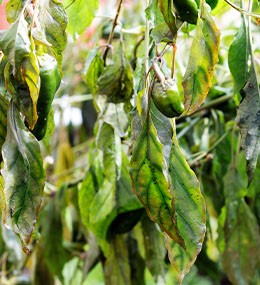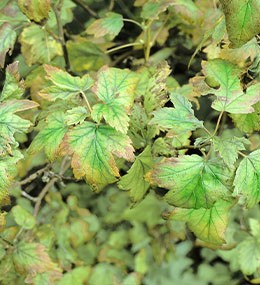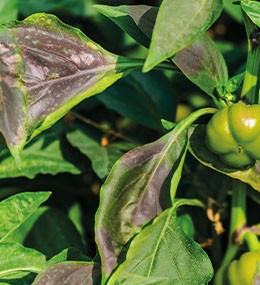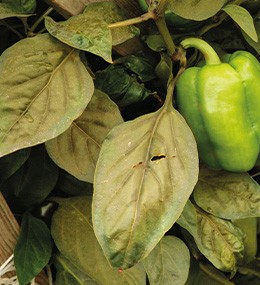Iron deficiency
An iron deficiency is first visible at the top of the plant. Young leaves look as if they have been bleached. The leaves turn yellow, while the veins remain green. This is because iron is an immobile element. What this means is that iron, when fixated, can no longer be distributed in the plant. Eventually, yellowing also occurs in the older leaves and smaller veins. In severe cases, the leaves may even die off.
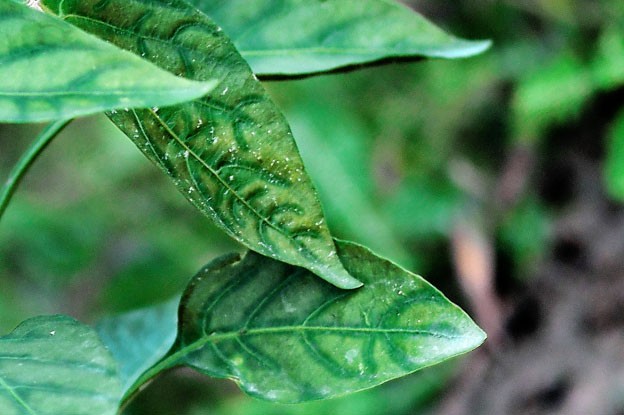
How do you recognise an iron deficiency?
At first, you'll see bleaching between the veins in young leaves. The veins themselves remain green.
Next, larger leaves will also turn yellow and the growth will slow down.
In severe cases leaves may die off.
What is the (possible) cause?
Too little iron available in the soil or substrate.
The pH value of the soil or substrate is too high.
Too much zinc or manganese in the soil or substrate.
Too much light on the nutrient tank. This can cause algae to grow in your nutrient solution.
The substrate is too wet. This stagnates the oxygen supply.
The root of your plant system functions poorly. This can be due to diseases, damage or low temperature.
How can you prevent it?
Always make sure your plants can absorb enough iron. Therefore, ensure the soil has been drained properly. Symptoms of iron deficiency are most common on soils that contain a lot of calcium and have a pH value that is too high. Use one of our base nutrients (like Terra Grow and Terra Bloom) to reduce the likelihood of an iron deficiency. Also keep abiotic factors in mind. These include temperature, light intensity, acidity, amount of moisture and wind strength.
How can you cure it?
To prevent an iron deficiency, you can use Vita Race. This is an iron spray for the growth phase and the first three weeks of the flowering phase. Other options are increasing the soil temperature and improving drainage. Is the EC or pH value too high? Then rinse your system with clean, pH-controlled water.
What does iron do for the plant?
Iron is important for the growth and development of a plant. It is used by the plant for the formation of chlorophyll. In turn, chlorophyll plays an important role during photosynthesis. With photosynthesis, a plant creates sugars and provides itself with energy. Many enzymes also require iron to fulfil their function.
Not sure if you have a iron deficiency?
Contact our Grow Expert via Servicedesk and ask for advice.
